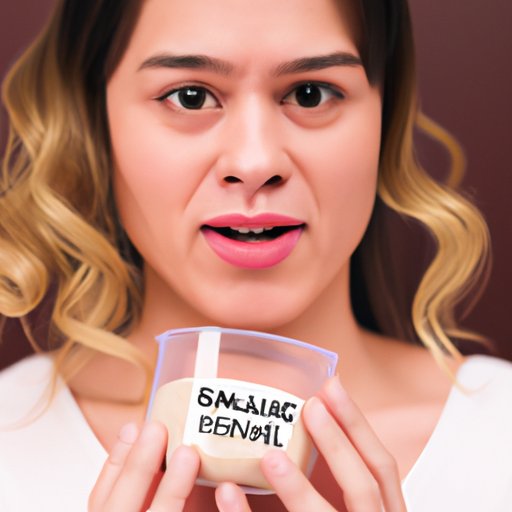Introduction
Gluten-free diets have become increasingly popular in recent years due to concerns over gluten intolerance and celiac disease. For those who follow a gluten-free diet, finding suitable substitutes for bread, pasta, and other wheat-based products can be a challenge. One such substitution is gluten-free bread crumbs, which are often used in cooking and baking as a coating or filler. Panko bread crumbs are a popular choice for traditional cooking and baking, but are they a good option for those on a gluten-free diet? This article will explore this question by examining the origins, ingredients, and uses of gluten-free panko.
Gluten-Free Bread Crumbs: Exploring Panko’s Place in the Mix
Gluten-free bread crumbs are made from a variety of alternative ingredients, such as rice flour, potato starch, or tapioca flour. These alternative flours are used to create a breadcrumb texture that is similar to traditional wheat-based bread crumbs. However, not all gluten-free bread crumbs are created equal.
Panko bread crumbs, in particular, are known for their light and airy texture. They are made using a unique baking process that results in a flakier crumb. Panko bread crumbs are traditionally made using wheat flour, which is not gluten-free. However, there are now several brands that produce gluten-free versions of panko bread crumbs using alternative flours, such as rice flour or cornstarch.
A Guide to Using Panko for Gluten-Free Cooking and Baking
If you are new to using gluten-free panko bread crumbs, it’s important to start with a few tips to ensure the best possible results. First, it’s important to choose the right type of panko bread crumbs. Look for brands that specifically advertise that their panko is gluten-free.
When incorporating panko into your recipe, there are a few techniques you can try to achieve the best results. For example, you may find that it is helpful to mix gluten-free breadcrumbs with other ingredients, such as Parmesan cheese or cornmeal, to add more texture and flavor. You can also try lightly toasting the breadcrumbs before using them in a recipe to enhance their crunchiness.
Here are some recipe examples that use gluten-free panko:
- Gluten-Free Fried Chicken
- Gluten-Free Crab Cakes
- Gluten-Free Onion Rings
From Sushi to Schnitzel: Navigating Gluten-Free Cuisine with Panko
Panko bread crumbs are commonly used in a variety of dishes, from Japanese sushi rolls to German schnitzel. However, for those on a gluten-free diet, traditional panko bread crumbs are off-limits. Luckily, gluten-free panko provides a suitable alternative for many dishes. Here are a few recipe examples that incorporate gluten-free panko:
- Gluten-Free Tempura Vegetables
- Gluten-Free Chicken Parmesan
- Gluten-Free Fish and Chips
Keep in mind that these recipes will require some experimentation to get the right texture and taste. However, with a little practice and the right ingredients, you can enjoy many of your favorite dishes without sacrificing taste or texture.
Breaking Bread: Understanding the Origins and Ingredients of Gluten-Free Panko
Most traditional panko bread crumbs are made using wheat flour, which is not gluten-free. However, gluten-free panko bread crumbs are made using alternative flours, such as rice flour or cornstarch. Some brands also use potato starch, tapioca starch, or even almond flour to create a gluten-free panko product.
The production process for gluten-free panko is similar to that of traditional panko. A batter is made using the alternative flour and water, then baked until it is crispy. The result is a light, airy crumb with a crispy texture.
However, there is always a risk of cross-contamination during the production process, so it is important to choose brands that are certified gluten-free and produced in a dedicated gluten-free facility.
Crispy and Crunchy: Exploring the Flavors and Uses of Gluten-Free Panko
A common concern with gluten-free bread crumbs is that they may not have the same taste or texture as traditional bread crumbs. However, many people find that gluten-free panko is just as crispy and crunchy as traditional panko, with a slightly different taste. Gluten-free panko may have a slightly nuttier or earthier flavor due to the alternative flours used.
In addition to using gluten-free panko in traditional recipes that require breadcrumbs, there are plenty of other ways to incorporate it into your cooking. For example, you can use it as a topping for casseroles or as a crispy coating for roasted vegetables.
Here are some recipe examples that use gluten-free panko in unique ways:
- Gluten-Free Baked Macaroni and Cheese with Panko Topping
- Gluten-Free Panko Crusted Stuffed Mushrooms
- Gluten-Free Oven Fried Zucchini Fries
Tips and Tricks for Using Gluten-Free Panko in Your Favorite Recipes
Finally, here are a few additional tips and tricks for using gluten-free panko in your favorite recipes:
- Store gluten-free panko in an airtight container in a cool, dry place to maintain its crunchiness.
- When substituting gluten-free panko for traditional bread crumbs, you may need to adjust the cooking time or temperature to achieve the desired results.
- Try mixing gluten-free panko with other gluten-free ingredients to create unique coatings or toppings.
- If you are concerned about cross-contamination, be sure to choose brands that are certified gluten-free and produced in dedicated gluten-free facilities.
Conclusion
If you are on a gluten-free diet, using gluten-free panko bread crumbs can be a great way to enjoy your favorite dishes without sacrificing taste or texture. With the right techniques and ingredients, gluten-free panko can produce the same crispy and crunchy results as traditional panko. Just be sure to choose certified gluten-free brands and experiment to find the best techniques for incorporating gluten-free panko into your recipes.
